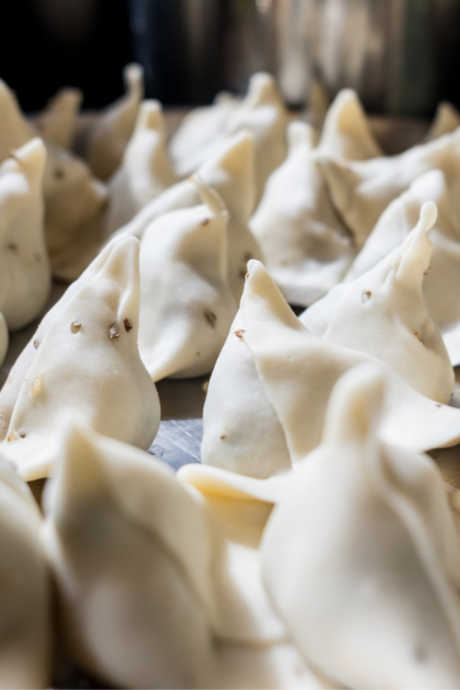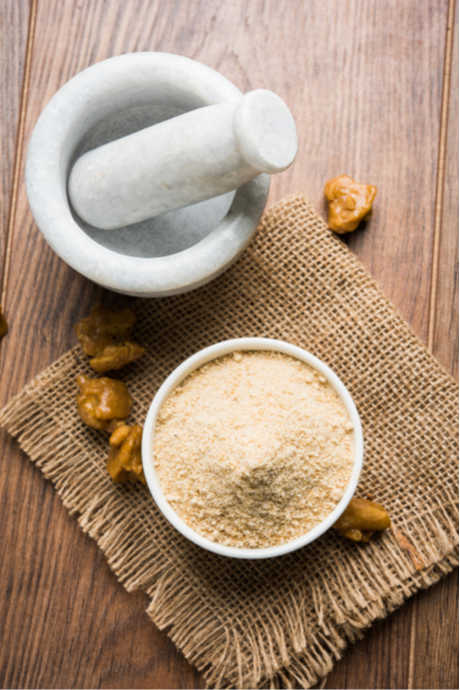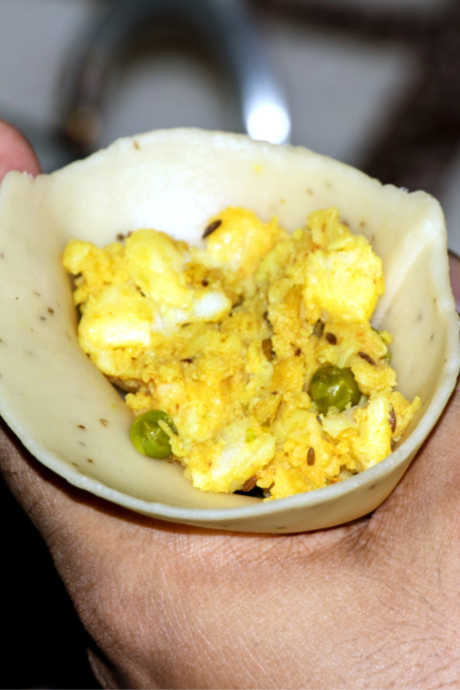Samosas: India's Favorite Snack
Posted by Julie on Mar 6th 2020
While we love to go out for all sorts of ethnic foods, we also love trying our hand at making it ourselves. From paella and spätzle to crepes and churros, we’ve covered a variety of dishes from different continents. In this post, we’ll share what we’ve learned about samosas. This tasty snack food is as beloved and widespread in India as cheese and crackers are here in the US.
The Basics of Samosas
Although samosas have become a hallmark of Indian street food and snack food, they originally came from central Asia. A tenth century Arabic cookbook referred to “sambusak,” and that name is still used in the Middle East for a three-sided filled pastry. Likewise, Persian writings from the same period mention “sanbosag.” They were also called “sambusak” and known to be a favorite among travelers, as they could be conveniently carried.
In fact, it was travelers who helped spread the samosa far and wide across Asia, the Middle East, and Africa. Even now, you will find a variety of triangular and pyramid-shaped pastries filled with different meats, vegetables, and cheeses. Indian samosas usually contain potatoes and spices, and they’re frequently served with chutney and chai.
Samosa Dough
You almost certainly already have most of the ingredients for samosa dough on hand: all-purpose flour, oil, salt, and water. If you want to achieve an authentic flavor, add a teaspoon of ajwain (carom seeds) to your dough. Otherwise, thyme is an adequate substitute.
The process for mixing the dough is similar to making pie crust, but with oil rather than butter. You’ll start by mixing the oil and flour, rubbing and pressing them together until the consistency resembles bread crumbs. You can also use a food processor to pulse the oil and flour until they come together.

When the mixture holds its shape when you press it between your hands, you’re ready to add water, a tablespoon or two at a time. For the best results, you want stiff dough, not soft. Take your time when adding water, and don’t knead the dough more than necessary. The pictures on Cook With Manali show what your dough ought to look like at every step in the process. We highly recommend using them as a reference to make sure your dough looks like Manali’s.
Once your samosa dough has come together, cover it with a damp towel so it doesn’t dry out, and let it rest for half an hour.
Ingredients for Samosa Filling
While samosas traditionally contain potatoes and peas, there are other key ingredients for the filling you probably don’t have on hand unless you cook Indian food regularly. Not all recipes will call for all of these ingredients:
- Cumin seeds
- Coriander seeds and ground coriander
- Fennel seeds
- Turmeric
- Garam masala
- Chaat masala
- Asafetida (or hing)
- Dried mango powder (or amchur)
- Pomegranate seeds powder (or anardana)
The first three ingredients might already be in your spice cabinet. The next two are also fairly standard, especially if you’ve made Chicken Tikka Masala at home. If you tried the Chaat-Spiced Chex Mix we featured, you may have chaat masala on hand. The last three ingredients are the ones that might require a special trip to an Indian grocery or specialty spice shop.

You can substitute a combination of onion and garlic powder for asafetida in a pinch. Both amchur and anardana can be replaced with tamarind, if you happen to have it. In this samosa recipe from Holy Cow Vegan, Vaishali suggests replacing the anardana and chaat masala with the juice of half a lemon.
Bear in mind, the ingredients above aren’t a comprehensive list, but they’re the ones you’re most likely to need to order online or pick up at an Indian grocery.
Finally, the potatoes and peas make up the bulk of a samosa’s filling. The potato is boiled and cubed so it’s soft, but not fully mashed. You can use frozen peas, but thaw them before adding to the filling. Other samosa fillings can include chickpeas, raisins and cashews, onions and rice, or even paneer, which is Indian cheese.
How to Shape and Fry Your Samosas
Now that the dough has rested and your filling is ready, it’s time to shape and fry your samosas. Once again, we recommend checking out the pictures on Cook With Manali. You’ll see exactly how your dough ought to look as you roll it, fold it, stuff it, and fry it.
Divide your big ball of dough into smaller balls; the recipe you choose will specify how many portions. Roll each of these into a circle, and cut it into two semicircles. Fold the semicircle into a cone, shaped like a smaller version of an ice cream cone. Stuff the cone with filling, and then seal the open end. You may find it helpful to moisten the dough with water along the seams so they’ll stick.

Manali cautions readers to roll the dough thin, but not so thin that it won’t contain the filling. But if the dough is too thick, it will take longer to fry, and the filling will be cold. Don’t use any flour when rolling out the dough. If necessary, Manali suggests oiling your rolling pin.
Frying samosas takes time and attention. Every source we consulted was clear on one point: Start frying on low heat, and take your time. Unlike churros, which only require a couple minutes per side, samosas can take about 20 minutes per batch. Vaishali from Holy Cow Vegan recommends using a deep fry thermometer to check the temperature of your oil; it should be around 300ºF. She also cautions against overloading the pan, which is a good rule no matter what you’re cooking.
Drain your samosas on paper towels and serve them with chutney or a curry, if you get the chance. It’s possible they will disappear almost immediately after they cool down enough to eat!
 Free shipping over $49
Free shipping over $49










